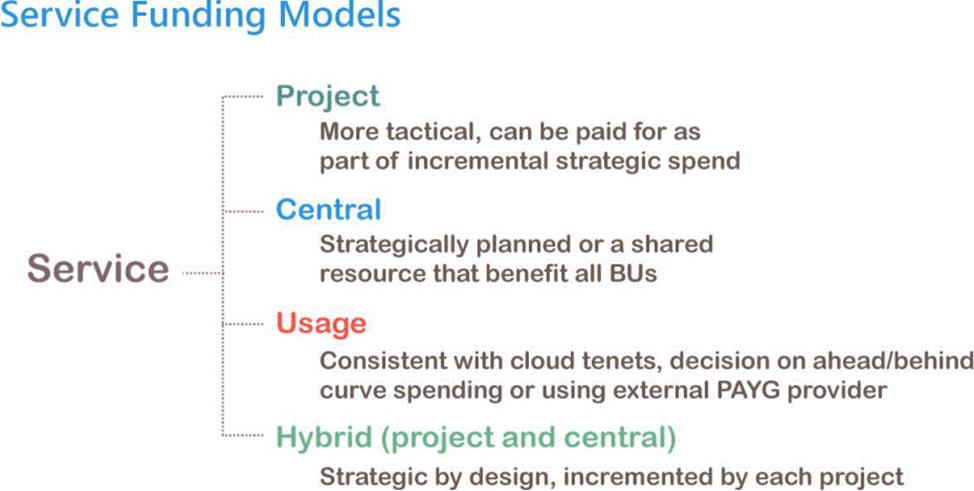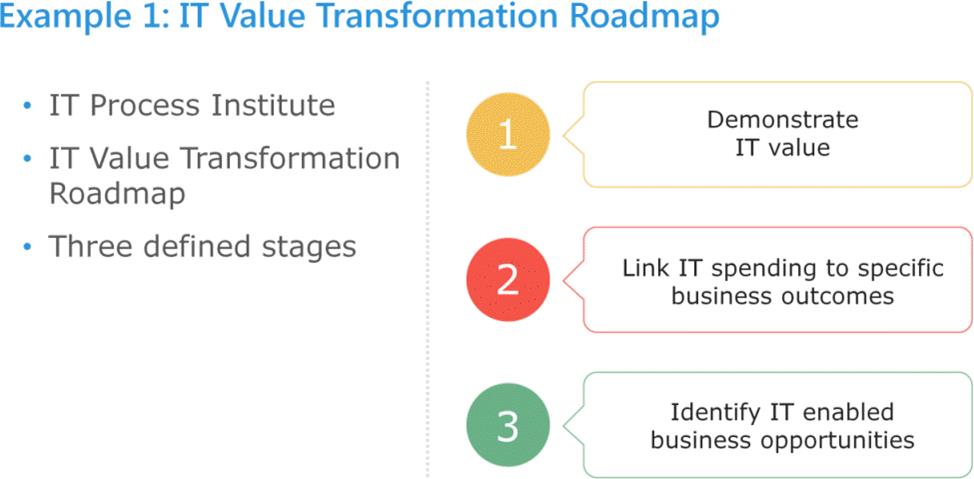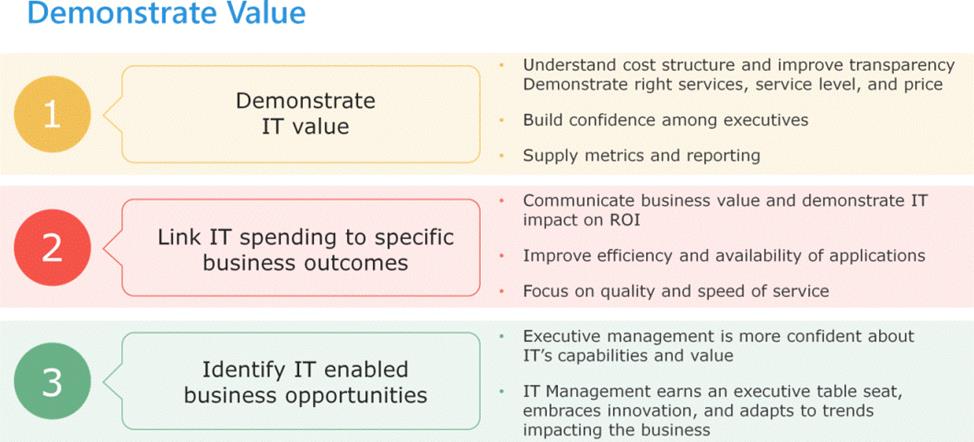DELL EMC E20-920 Cloud Services Expert Exam for Cloud Architects Online Training
DELL EMC E20-920 Online Training
The questions for E20-920 were last updated at Dec 27,2025.
- Exam Code: E20-920
- Exam Name: Cloud Services Expert Exam for Cloud Architects
- Certification Provider: DELL EMC
- Latest update: Dec 27,2025
Your company requires a service funding model that will allow it to make short term spending decisions as part of an incremental strategic spending program.
Which funding model should you recommend?
- A . Central
- B . Usage
- C . Project
- D . Hybrid
An IT organization for a medium sized grocery retailer is considering adopting ITaaS. They are interested in offering services to the lines of business through a service catalog. As a first step, they performed an inventory of all existing IT capabilities.
What would you recommend as a preferred approach to building services in their service catalog?
- A . Dedicate resources to build perfect services that go beyond customer needs
- B . Offer services that are of highest priority to IT in the service catalog
- C . Use an agile, iterative way to quickly build services through a phased approach
- D . Offer all IT capabilities as services to the customer to provide greater choice
A company wants to deploy services in a new cloud infrastructure. The cloud architect is helping the company design services and realizes that the company is having trouble because of a legacy, organizational structure. The company is introducing multiple touch points into the service delivery process.
What impact will these additional touch points have on the process?
- A . Increase in the number of APIs.
- B . Increase in service catalog deployments
- C . Delays in service delivery
- D . Delays in metric collection
A service provider is preparing to offer PaaS. One of the challenges they are facing is incorporating the cost of databases.
What should you recommend as the best way to include this in the costing model?
- A . Treat database licensing as a variable cost in the model
- B . Treat database licensing as a fixed cost in the model
- C . Treat database licensing as a hybrid cost in the model
- D . Ignore database costs in the model
What is the most important goal of an IT transformation to the cloud?
- A . IT operates more efficiently and at less cost
- B . IT should be more responsive and agile
- C . IT is aligned to business outcomes and demonstrates value
- D . IT should be a broker for external services
The operations department of a major hosting provider is under pressure to deliver services more quickly. They have a large number of tools for managing IT technologies across the data center. Although investments in virtualization and automation have been made, it still takes months to provision basic IT services to meet new customer demands. Hence, the provider is considering offering cloud services.
What is a key focus area for driving higher operational efficiency and associated profits?
- A . Re-design and strengthen the architecture to ensure that the components within the data center are modular and can be reused
- B . Deliver customer services derived from an approved set of standardized service templates, establish change control to manage the life cycle of the templates
- C . Provide a custom capability for each customer based on analysis of the application architecture; use shared services where possible
- D . Deliver custom services using automation tools, apply change control to the tools to minimize change; develop reusable components to build environments
You are designing a cloud services architecture for a company. You have determined that running some of the customer facing applications the company uses in a public cloud would save a significant amount of money but the security department wants to retain control of customer data at rest. The application infrastructure consists of two database servers and eight web servers.
How can you architect the application to minimize the risk involved with data exposure?
- A . Host the application servers in the public cloud and host the databases in the private cloud.
- B . Scale the application horizontally by utilizing a hybrid cloud where the application and database are mirrored a public cloud.
- C . Cluster four of the application servers and one database server in the public cloud and the remaining servers in the private cloud.
- D . Host the application servers and database servers in the public cloud and set up RBAC to restrict access to the applications
A company is considering transitioning to ITaaS. During an exploratory discussion, a potential stakeholder asks for clarification on the key difference(s) between traditional IT services and a cloud services.
What is the correct response?
- A . A traditional IT service is often provided without accounting for direct cost or business value to the lines of business; a cloud service is packaged to provide business value to the lines of business and support direct costing through showbacks.
- B . A traditional IT service views the physical network architecture as a manually-scaled system; a cloud service relies on an underlying layer of scalable network architecture.
- C . A cloud service is any service that uses one of the five tenets of cloud computing; a traditional IT service uses guidelines from a more traditional computing model.
- D . Both traditional IT services and cloud services are capable of driving value for the lines of business through service catalogs and degrees of automation; cloud services make use of cloud tenets and are designed to scale vertically.
An organization falls under the compliance regulations for PCI. The organization will deploy applications in the public cloud and wants to use a public cloud provider that is PCI compliant.
How does the organization confirm compliance?
- A . Provide third party audit documentation to the provider for review
- B . Review the provider’s compliance controls and third party audit documentation
- C . Review the provider’s infrastructure logs and access logs
- D . Provide application logs to the provider for review
Your company is an application service provider that hosts customer applications and data in your data center. The entire infrastructure is client-server based and you have begun to assess the risk of moving your web applications to a cloud-based infrastructure. During this phase you are required to provide the value of corporate assets involved.
How should you assess these corporate assets?
- A . Use realistic valuations
- B . Create a valuation that is information-asset centric
- C . Use original purchase values
- D . Create values based on accelerated depreciation
Latest E20-920 Dumps Valid Version with 159 Q&As
Latest And Valid Q&A | Instant Download | Once Fail, Full Refund




